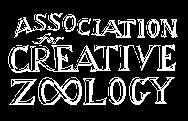RALLY TO RECOGNIZE THE BULL-RACCOON
A Tennessee Wonder and Evidence of God’s Creation
FEBRUARY 22, 2015, 2pm
Tennessee Legislative Plaza, Nashville, Tennessee
To download a PDF of a 2-page flyer about the rally to share with friends and neighbors, CLICK HERE.
On Sunday February 22, 2015 at 2pm the Tennessee Chapter of the Association for Creative Zoology will hold a gathering on the Tennessee Legislative Plaza in front of the State Capitol in Nashville to advance a petition to designate Taurus cockettensis, commonly known as the “Bull-Raccoon,” as the official antediluvian animal of the State of Tennessee.
The Latin name for the species recognizes the celebrated folk hero, frontiersman, soldier and Tennessee native David Stern Crockett (August 17, 1786 – March 6, 1836), known for his “coon-skin” hat. As early as the 1880s, Taurus crockettensis fossils have been found at locations along the Cumberland Plateau and in Middle Tennessee.
While there are many other examples of animal hybridity in the fossil record, the bull-raccoon offers evidence that natural selection is not responsible for species variation, but is the result of “zoomorphic juncture,” or the species collage by a supreme creator. Dragons and unicorns cited in the King James edition of the Bible are further evidence of this phenomena. The Association posits that the Principle of Zoomorphic Juncture should be taught in Tennessee high school science classes as an alternative to the Theory of Evolution.
Many other examples of zoomorphic juncture exist as well, including the Hydra, the Griffin, the Minotaur and the duck-billed platypus. The University of Tennessee has been recognized for having the largest adult male centaur specimen in the United States. Discovered in Volos, Greece in the 1980s by Dr. Bill Willers from the University of Wisconsin, Oshkosh, it has been on display in the John C. Hodges Library on the Knoxville campus since 1994.
There are many additional examples of zoomorphic juncture from North America, including several specimens from Tennessee. In 1962 Lester Morgan of Rockwood, Tennessee caught what is best described as a ground-hog fish in the Holston River. This is a unique example, as historically most fur-covered fish have been associated with northern states and provinces in the United States and Canada.
During the famous Scopes Trial in Dayton Tennessee the Associate for Creative Zoology, lead by Reverend James Randoph Denton set up an education display on the lawn of the Rhea County Courthouse. Support for Creation Science in Tennessee is often attributed to the formative work of the Association during the 1920s.
In 1931 the University of Tennessee student magazine, the Mugwump, published an illustrated editorial advocating for the Bull-Raccoon to be designated as the university’s mascot. A student petition that claimed that the Bull-Raccoon refuted the Theory of Evolution attracted over 350 signatures. The University President James D. Hoskins, who was known for his rigid standard of morality, was receptive to the effort, having once fired seven faculty in 1923 for advocating on behalf of evolutionary theory, convinced the Board of Trustees to shut down the Mugwump because of its allegedly “obscene” poetry. Over two decades later, the University of Tennessee selected “Smokey” the blue-tick-coon hound as its official mascot.
The day following the rally, on Monday February 23rd the Association for Creative Zoology will open an exhibition at MTSU’s Todd Art Gallery in Murfreesboro with a reception to be held from 4:30-7pm.
Today there is a growing popular effort to recognize the Bull-Raccoon in Tennessee. Please join your friends and neighbors who are concerned about this issue at the Tennessee State Capital to “Rally for the Bull-Raccoon.” For more information, contact:
Beauvais Lyons, Director of the Hokes Archives
1715 Volunteer Blvd., University of Tennessee
Knoxville, TN 37996-2410
Email: blyons@utk.edu
CLICK HERE to sign the petition.
CLICK HERE to see images documenting the Taurus crockettensis.
To learn more about "The Association for Creative Zoology," CLICK HERE.
